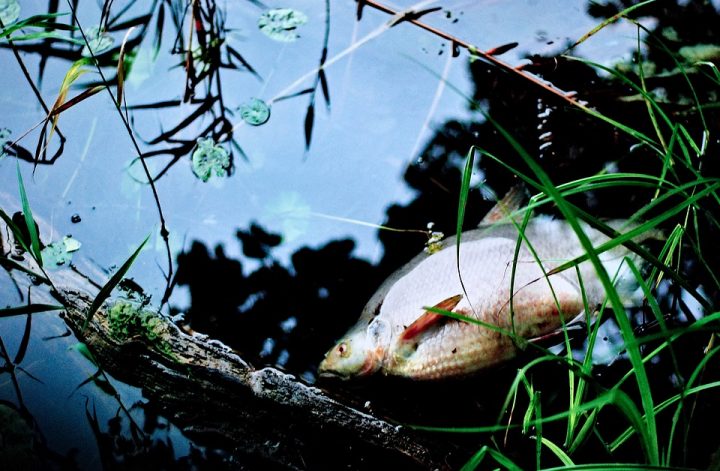Introduction: What is meant by Plastic Pollution?
Plastic pollution is exactly what its name tells us. It is the pollution caused by plastic of all kinds and from all sources that degrade the land and water sources. The most impacted by the plastic pollution problem is undoubtedly the oceans, seas and the aquatic ecosystem. Plastic is a long term and severe problem for these ecosystems as it is unbiodegradable i.e. it cannot be decomposed or degraded naturally after some time so it stays and causes a lot of problems for humans and animals alike.

Sources of Plastic Pollution:
Plastic is used extensively in our daily lives since it is cheap, disposable and reusable. However, when it needs to be discarded is when the problem arises as it is unbiodegradable and even when discarded, no matter how properly they are disposed off, there is always a danger of microplastic leaching that remains in the environment for a long time. With the increasing population and resulting urbanization is why this problem is getting serious as days pass. Some of the sources of Plastic pollution are mentioned below:
- Disposables: Plastic straws, cups, plates– These make up 7.27% of all plastic and are often used in our daily lives. About 500 million straws are used per day in the US alone. It is not difficult to imagine how many straws alone the entire world would go through especially the increasing population statistics. Almost half of these straws end up in the bins, sewage and all of it ends up in the oceans by way of storm runoffs, sewage lines etc. Plastic cups used by breweries, cafes and party plates that are discarded easily because they are cheap and hence can be bought again.
- Plastic Bags and Fishing nets: These make up 11.18% and are the most dangerous for aquatic life as half of the PVS fishing nets and plastic bags that end up in water suffocate marine animals and birds especially the endangered sea turtles and sea gulls that get trapped in these plastic bags and cannot free themselves. This has actually lead to a number of deaths of sea gulls as well ass the sea turtles. There have also been cases where animals and birds have been severely tangled and injured themselves.

- Bottle and Container Caps: These make up 7.27% alone and are used by food and beverage companies which in total produce 31.14% of plastic and almost always these end up in the seas and oceans where they accumulate. There is an Island made up of entirely plastic materials floating in the Pacific ocean. It covers and area of approximately 1.6 million square kilometers which is roughly 3 times the size of France! It is officially known as the Great Pacific Garbage Patch and it floats mostly under the surface of the water where it is especially detrimental to the aquatic life and migratory species moving from one sea to another.
- Other sources include: Plastic containers and Tupperware, balloons, lids, plastic packaging, coffee cups and lids etc.
You might also be interested in: Non-recyclable Multi Layer MLP Uses and Alternatives
EFFECTS OF PLASTIC POLLUTION:
- Disposables that end up in landfills All these end up in landfills where they leach microplastics in the soil thereby affecting groundwater or in the ocean waters where they harm marine life. Since it takes up about 400 years to decompose one single plastic, it gives sufficient time for it to leach toxic substances and microplastics into the soil and land where they can be taken up by plants and enter our food chain. Also check out: Impacts of Microplastic Pollution on the Environment
- As mentioned above, the plastic bags that end up in water take a long time to degrade and so release microplastics that if ingested by animals enter our food chain and can cause severe health effects to both the marine animals and humans. Moreover, the instances of death of marine animals due to strangulation and suffocation by these plastic bags has been increasing. Check out: The Problems and Effects of Plastic Debris in Seas and Rivers of South Asia
- Plastic pollution changes habitats and ecosystems, disrupts the food chain by introducing toxic substances into it, it reduces the ability of species to adapt to the changing climate and overall has a detrimental effect on living beings. Read, Plastic Crisis- An Emerging Threat to Mountain Ecosystem.
SOLUTIONS TO PLASTIC POLLUTIONS:
Alternatives to Plastic have been introduced which are not only easily recyclable but also sustainable:
- Using bamboo straws– bamboo not only grows extremely fast but it is also safe for the environment as it can easily be recycled and will never run out. Stainless steel straws can also be used.
- Choosing glass or aluminum containers and cutlery over plastic
- Companies on a global scale should take initiatives to switch to recyclable and eco-friendly alternatives instead of plastic. Particularly for their packaging as it generates the majority of plastic waste.
- Making alternatives to plastics that are biodegradable. Check out Production of Bioplastics using Biodegradable Sources
You may further like to read:
How is Pakistan handling Plastic Waste and Pollution?
I hope you all liked this post! Please comment below if you have any suggestions, comments, or feedback! We at #envpk love hearing from our readers! Thanks!




